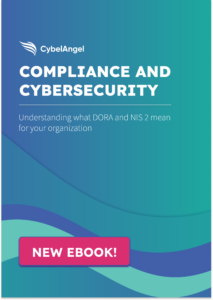Smart Buildings Under Siege: Manufacturers Under Attack

Table of contents
Attacks like the Colonial Pipeline ransomware attack have brought broader awareness of the need to properly segment networks for IT and OT. With tensions rising in eastern European cyberspace, advisories are being issued to the cybersecurity teams of critical infrastructure to be on guard. Now is the time to review how to protect smart buildings.
Digital Security is Physical Security
According to the International Society of Automation, a cyber-physical system is a smart system that includes engineered interacting networks of physical and computational components. These highly-interconnected and integrated systems provide new functionalities to improve quality of life and enable technological advances in critical areas, such as personalized health care, emergency response, traffic flow management, smart manufacturing, defense, and energy supply. Recent examples of digital security halting business operations can be found in Coors, which had their production lines shut down, the Colonial Pipeline-related fuel panics, or a damaging blast furnace in Germany. To stop cyberattacks affecting physical security, infosec teams need to get to the root of the problem.
The Three Roots of the Problem
Smart Buildings tend to fall prey to three issues: human error, supply chain attacks, or shadow it. These digital risks are difficult to find as they are often not visible to internal security tools or occur randomly:
- Human error is a significant contributor to smart building security breaches. Common forms include ports being left open after servicing, connections not being severed, or unapproved side systems to help manage OT. These mistakes provide an opening to threat actors to begin their cyberattack.
- Supply chain attacks are insidious because they abuse the trusted access given to third parties. ENISA estimates that 66% of cyber attacks focus on the supplier’s code. But code is not the only sensitive information third parties can have. CybelAngel routinely locates blueprints that could expose physical assets for targeted exploitation. Such attacks leave organizations out of commission for days to weeks.
- Shadow assets/shadow IT is the third root cause of smart building breaches. Estimates show cloud-based shadow IT is 10x larger than a company’s known cloud usage. Moreover, shadow assets are sometimes chosen for their lack of security controls, as 35% of employees say they need to work around their company’s security policy to get their job done. From physical assets like exposed NAS drives to cloud applications, threat actors are always looking for vulnerable entry points. The explosion in cloud services has given threat actors a gold rush of opportunities.
While there are three root problems, there are ways to bridge the visibility gaps to control these digital risks.
Bridging the Gap
Cross-functional physical and IT security teams can help bridge the gap. Physical security teams need IT security to integrate third-party providers’ techs and outsourced systems into their attack surface management strategy. This enables IT to bridge physical security and digital risk protection. But to accomplish this, cybersecurity teams need a way to locate unknown and external digital risks. Tools like Digital Risk Protection Solutions (DRPS) can provide holistic coverage locating exposed assets, blueprints outlining physical IT assets, exposed IoT/OT devices, or vulnerable applications. Those with smart buildings and manufacturers with OT environments need to locate digital risks proactively. Gartner estimates that several important events are coming in the next year. Gartner also predicts the financial impact of cyber-physical system attacks resulting in fatal casualties will reach more than US$50 billion by 2023.
Learn more at our webinar
Gartner estimates that cyber attackers will have weaponized operational technology (OT) environments to successfully harm or kill people by 2025. Discover how CybelAngel can help you bridge the gap between physical security and digital risk protection in our webinar Smart Buildings Under Siege.
